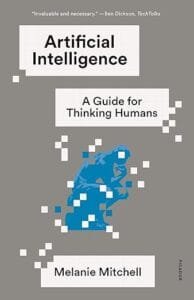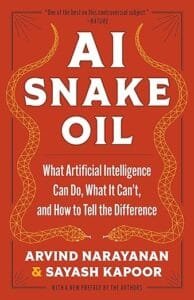5 Books to Better Understand AI
Artificial intelligence continues to reshape every aspect of our society, from healthcare and education to criminal justice and employment, making it essential to understand both its transformative potential and inherent limitations. These five carefully selected books provide the foundation needed to navigate our increasingly AI-driven world with informed confidence rather than blind optimism or unfounded fear.
Key Takeaways
- Understanding AI requires separating reality from science fiction hype through expert-guided education
- The alignment problem represents one of the most critical challenges in ensuring AI systems serve human values
- Many AI applications are overhyped snake oil while others deliver genuine transformative benefits
- Technical foundations in Algorithms and search methods provide essential knowledge for comprehending modern AI systems
- Successful human-AI collaboration requires developing specific skills and understanding co-intelligence principles
Why Understanding AI Matters More Than Ever
Artificial intelligence has moved beyond Silicon Valley laboratories into boardrooms, classrooms, and courtrooms across America. AI is everywhere, influencing hiring decisions, medical diagnoses, and even determining prison sentences. Yet despite this widespread adoption, a significant gap exists between AI hype and reality, leaving many people unprepared for the changes ahead.
The proliferation of AI tools and applications makes informed understanding crucial for anyone wanting to thrive in modern society. From ChatGPT and image generators to predictive analytics and automated decision-making systems, these technologies affect daily life in ways both visible and hidden. Understanding how they work, their capabilities, and their limitations isn’t just academic curiosity—it’s practical necessity.
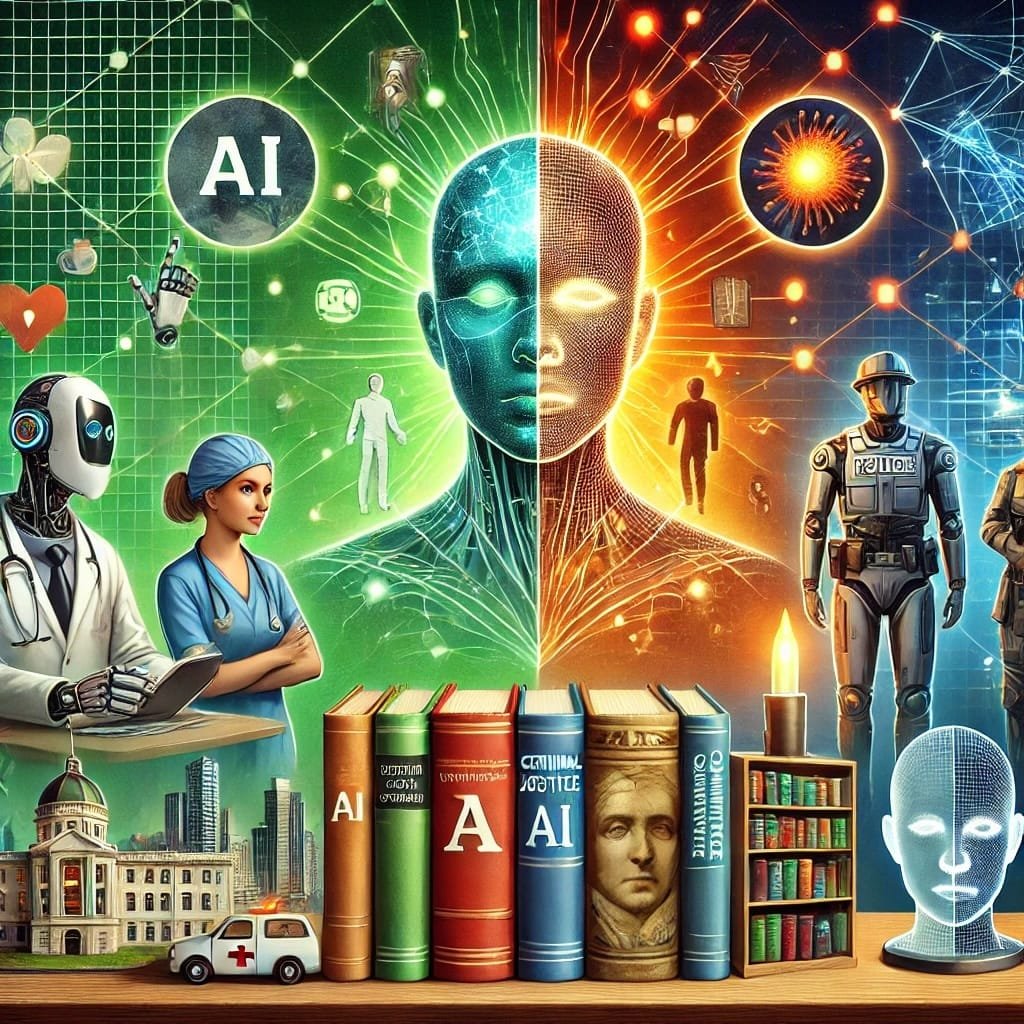
Separating AI Reality from Science Fiction Hype
Melanie Mitchell’s “Artificial Intelligence: A Guide for Thinking Humans” serves as the perfect starting point for anyone seeking to understand AI without getting lost in technical jargon or Hollywood fantasies. Mitchell, a renowned computer scientist, expertly demystifies the field by tracing AI’s evolution from its early symbolic approaches to today’s deep learning models.
The book excels at explaining why current AI systems, despite their impressive capabilities in image recognition and natural language processing, remain fundamentally different from human intelligence. Mitchell addresses common AI myths head-on, explaining why machines that can beat humans at chess or generate convincing text still struggle with tasks a toddler finds trivial.
What sets this book apart is its balanced perspective on neural networks and machine learning. Rather than dismissing AI as overhyped or celebrating it as revolutionary, Mitchell provides readers with the knowledge needed to evaluate AI claims critically. Her comparisons between early AI approaches and modern systems help readers understand both the progress made and the challenges that remain.
The Critical Challenge of AI Ethics and Human Values
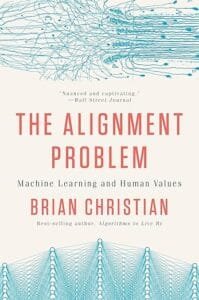 Brian Christian’s “The Alignment Problem” tackles perhaps the most important question in AI development: how do we ensure these powerful systems actually do what we want them to do? The book investigates real cases where misaligned AI systems caused significant harm, from biased hiring algorithms that discriminated against qualified candidates to criminal justice applications that perpetuated racial inequities.
Brian Christian’s “The Alignment Problem” tackles perhaps the most important question in AI development: how do we ensure these powerful systems actually do what we want them to do? The book investigates real cases where misaligned AI systems caused significant harm, from biased hiring algorithms that discriminated against qualified candidates to criminal justice applications that perpetuated racial inequities.
Christian’s work stands out for its combination of technical depth and human storytelling. He interviews leading AI safety researchers and documents their different approaches to solving the alignment problem. The book reveals how even well-intentioned AI systems can produce harmful outcomes when their optimization targets don’t perfectly match human values and intentions.
The philosophical stakes couldn’t be higher. As the AI revolution accelerates, ensuring these systems remain aligned with human values becomes increasingly challenging. Christian’s book provides essential context for understanding why algorithmic bias isn’t just a technical problem but a fundamental challenge that requires ongoing attention and research.
Identifying AI Snake Oil and Genuine Breakthroughs
Arvind Narayanan and Sayash Kapoor’s “AI Snake Oil” offers a much-needed reality check in an era of inflated AI claims. The authors systematically examine AI applications across multiple sectors, revealing where the technology delivers genuine value and where it’s misleading marketing dressed up as innovation.
The book’s strength lies in its detailed analysis of specific AI failures and their social consequences. The authors document cases where AI systems denied essential services, perpetuated discrimination, or failed to deliver promised benefits. Their research shows how Big Data and sophisticated Algorithms can still produce biased or unreliable results when applied inappropriately.
Narayanan and Kapoor provide practical frameworks for evaluating AI claims, helping readers distinguish between robust applications and snake oil. Their work is particularly valuable for business leaders and policymakers who must make decisions about AI adoption without falling victim to vendor hype or unrealistic expectations.
Mastering the Technical Foundations of AI
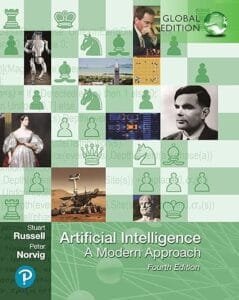 Stuart Russell and Peter Norvig’s “Artificial Intelligence: A Modern Approach” remains the definitive textbook for understanding AI’s technical foundations. First published in 1995 and now in its fourth edition, this comprehensive text has shaped university AI education worldwide and continues to influence how the field thinks about intelligence and rational behavior.
Stuart Russell and Peter Norvig’s “Artificial Intelligence: A Modern Approach” remains the definitive textbook for understanding AI’s technical foundations. First published in 1995 and now in its fourth edition, this comprehensive text has shaped university AI education worldwide and continues to influence how the field thinks about intelligence and rational behavior.
The book’s “rational agent” model provides a unifying framework for understanding diverse AI approaches, from search algorithms and knowledge representation to machine learning and Robotics. Russell and Norvig cover both classical AI methods and modern approaches, helping readers understand how different techniques complement each other in building intelligent systems.
While more technical than the other books on this list, “A Modern Approach” rewards readers with deep understanding of how AI systems actually work. The authors explain search methods, natural language processing, and learning algorithms with mathematical precision while maintaining readability for motivated beginners. This foundation proves invaluable for anyone who needs to evaluate AI systems or work closely with AI developers.
Building Successful Human-AI Collaboration
Ethan Mollick’s “Co-Intelligence: Living and Working with AI” takes a refreshingly optimistic and practical approach to AI’s role in the workplace. Rather than focusing on job displacement fears, Mollick explores how humans and AI systems can work together to achieve better outcomes than either could accomplish alone.
The book provides concrete strategies for developing effective AI interaction skills, from crafting better prompts to understanding when to trust or question AI recommendations. Mollick draws on case studies from business and creative fields to show how successful human-AI collaboration actually works in practice.
What distinguishes “Co-Intelligence” is its forward-looking perspective on augmented intelligence. While other books focus heavily on AI risks and limitations, Mollick emphasizes the opportunities for humans to leverage AI tools to enhance their capabilities. His work offers valuable guidance for anyone preparing for the future of work in an AI-enhanced world.
Your Next Steps in AI Education
These five books complement each other perfectly for building comprehensive AI understanding. For complete beginners, I recommend starting with Mitchell’s “Artificial Intelligence: A Guide for Thinking Humans” to establish foundational knowledge, then moving to Christian’s “The Alignment Problem” to understand the ethical dimensions.
Business professionals should prioritize Narayanan and Kapoor’s “AI Snake Oil” for its practical guidance on evaluating AI claims, followed by Mollick’s “Co-Intelligence” for implementation strategies. Those seeking deep technical understanding should tackle Russell and Norvig’s textbook, though it requires significant mathematical background.
Reading these books in sequence provides a well-rounded perspective on AI’s current state, future potential, and ongoing challenges. Each author brings unique expertise and viewpoints that together form a complete picture of where AI stands today and where it’s heading. The investment in understanding these perspectives pays dividends in navigating our increasingly AI-driven world with informed confidence.
Sources
latest video
news via inbox
Nulla turp dis cursus. Integer liberos euismod pretium faucibua


